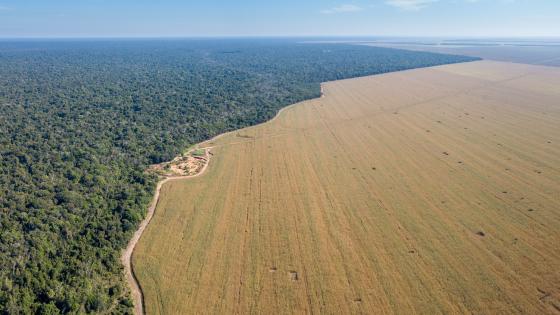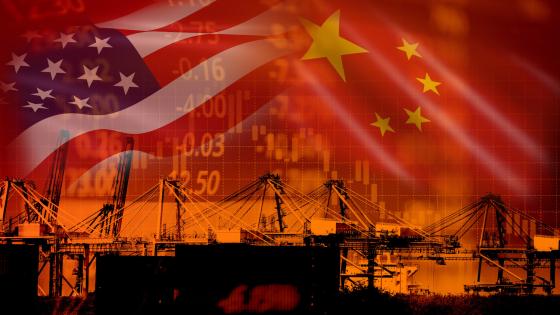The “Great Trade Collapse” that occurred between the second quarter of 2008 and the third quarter of 2009 was the steepest fall of world trade in recorded world history. Despite the trade collapse, the 2008 crisis and its recessionary aftermath did not fuel widespread protectionism.
There was protectionism after the crisis but it was limited. Evenett (2011) and his collaborators have carefully documented over 1,400 new measures that discriminate against foreign products put in place between November 2008 and the end of 2010. However, there were also numerous instances of liberalisation—many of the countries that were among the most active users of restrictive trade policies also tended to selectively reduce the level of protection for some products.
Thus, the stylised facts are that the overall level of protection did not increase substantially, that there was significant heterogeneity in the use of trade policy, that this heterogeneity spans the direction of trade policy within countries as well as across countries; and that developing countries, especially large emerging markets, were among the most active users of trade policy.
Why so little protection?
Many have hypothesised that the growth in integrated supply chains is a factor explaining the lack of large scale protection. Others point to the fact that WTO rules and disciplines constrained the ability of governments to increase protection.
In the case of high-income nations, WTO rules are particularly binding. These countries have all made commitments not to raise levels of protection above prevailing applied tariffs. Moreover, applied rates are low on average, often around 5% or less. During the crisis there were no instances in which OECD countries raised tariffs above bound WTO levels. Developing countries in contrast have much greater scope to raise tariffs as their WTO bindings are less complete and often involve ‘ceiling bindings’ that are far higher than applied tariffs. This ‘water in the tariff’ allows countries to raise levels of protection without fear of retaliation by OECD trading partners.
Determinants of trade policy
In Gawande et al (forthcoming) we analyse the determinants of the trade-policy behaviour, primarily tariffs1, in seven emerging markets – Argentina, Brazil, China, India, Mexico, Turkey, and South Africa.
We use two measures of vertical specialisation formalised by Johnson and Noguera (2009) and made up-to-date by Daudin et al (forthcoming).2
- The first vertical specialisation measure is the share of imports in a sector that is used directly and indirectly, that is, embedded as intermediate inputs, in the country’s own exports.
- The second measure is the proportion of a sector’s exports used as intermediates by exporters in other countries.
Combined, thesemeasure the intensity of two sources of antiprotectionist pressure. High tariffs on imports in a sector undermine the competitiveness of the sector’s exports that intensively use those imports.
- The first source of antiprotectionism is exporters in that sector, who will lobby against tariffs that raise their input costs.
- The second source of antiprotectionism is foreign lobbying by exporters in other countries who are dependent on the source country for supplying them with intermediate inputs.
Low or zero tariffs in the source country are desirable for keeping their input costs down. Baldwin (2010) develops a theoretical framework to analyse the political economy incentives that are generated by these types of interdependencies, showing that they produce pressures for unilateral liberalisation.
In addition to the two measures of vertical specialisation, we control for other possible determinants of trade-policy responses, including the impact of tariff bindings (in WTO and preferential agreements); the level of intra-industry trade(a measure of trade in differentiated varieties of similar products); the output-to-import ratio, z, popularised by the Grossman-Helpman protection-for-sale model, where the intensity of demand for protection by import-competing lobbies is a function of output (which determines the size of rents from protection) and imports (the smaller are imports the lower the deadweight loss from protection); and, finally, the intensity of use of imported intermediates by a domestic industry.
Our results suggest that WTO tariff bindings bind, independent of the water in the bindings, and that the damping effect on protectionism of intermediate imports is striking for India and South Africa, but not necessarily for Argentina, Brazil, Mexico, and Turkey.
Vertical specialisation has a major impact in deterring tariffs, suggesting that governments are keen to advance the interests of their exporters by reducing tariffs on their inputs. This may also be taken as evidence that exporters in foreign countries may politically influence home tariffs since their competitiveness depends on the supply of cheap inputs from home producers.
Pre- and post-crisis
We find no difference in the role of tariff bindings, intra-industry trade, and lobbying before and after the crisis. Only in South Africa is there a significant increase in pressure to raise tariffs within WTO bindings. In the post-crisis period exporting sectors in India’s partner countries appear to have had a strong influence on lowering Indian tariffs, specifically on products they import from India for their own intermediate use. This source of antiprotectionism is also evident for Brazil and Turkey. In the case of China, Mexico, South Africa, and Argentina, vertical specialisation is the main source of antiprotectionism after the crisis. Domestic exporters are the prime movers in demanding lower protection on imported goods they intensively use. Sectors whose output is used as intermediate inputs by foreign exporters were liberalised in Brazil, India, and Turkey in the post-crisis era. Argentina, China, Mexico, and South Africa, on the other hand, have felt the pressure to liberalise in sectors where imports comprise intermediates used by domestic exporters.
Conclusion: The dog that didn’t bark
With the exception of China, most developing countries and emerging markets have substantial freedom to raise tariffs. In practice however most countries did not utilise this policy space following the 2008 financial crisis.
- Our regressions indicate that the crisis did bring about increased demands for protection, but that the position of domestic and foreign exporters in the global supply chain exerted offsetting liberalising forces in many countries.
- The demand for cheap inputs by downstream users, both domestic suppliers and exporters, and the demand for a country’s exports by vertically specialised exporters in partner countries, exert countervailing pressure against protectionism, whether from domestic lobbies or reflecting the revenue needs of governments.
Thus, the economic interest of users and vertically specialised firms that has been a factor driving unilateral liberalisation (Baldwin 2010) helped keep protectionism in check globally during the crisis.
Different countries behave differently in their trade policies. But while this heterogeneity is an important message from our results, our main message is that the nature of trade today produces powerful incentives against protectionism. Certainly institutions like the WTO have contributed to these incentives. Unlike the current literature, which focuses on terms-of-trade externalities in assessing the beneficial impact of the WTO, our results indicate that there are other, more powerful forces at work undermining protectionism.
- Greater specialisation brought about both by the large reductions in trade costs and the integration of populous countries that has multiplied the scale of global trade drives this change.
- The biggest benefit of the WTO may well be that, by reducing trade-policy uncertainty and having supported a decades-long process of multilateral liberalisation of trade, it has facilitated the greater specialisation manifest in global supply chains and the associated profusion of multinational activity that is now a potent force for maintaining open markets.
Our results, however, should not lead to complacency – protectionism is not dead. The tough macro situation ahead can be expected to increase pressure on governments to promote domestic economic activity. The recent hike in tariffs on automobiles by Brazil illustrates that open trade cannot be taken for granted.
While continued monitoring of trade-policy measures is important, the new constellation of trade interests appears to produce incentives that will keep protectionism in check.
References
Altomonte, Carlo and Ottaviano, Gianmarco IP (2009), “Resilient to the Crisis? Global Supply Chains and Trade Flows,” in Baldwin, Richard (ed), The Great Trade Collapse: Causes, Consequences and Prospects. London: CEPR.
Baldwin, Richard (2009), “The Great Trade Collapse: What Caused It and What Does It Mean?” in Baldwin, Richard (ed), The Great Trade Collapse: Causes, Consequences and Prospects. London: CEPR.
Baldwin, Richard (2010), “Unilateral Tariff Liberalization,” The International Economy 14: 10-43.
Bems, Rudolfs, Johnston, Robert C. and Kei-Mu Yi (2009), “The Collapse of Global Trade: Update on the Role of Vertical Links,” in Baldwin, Richard (ed), The Great Trade Collapse: Causes, Consequences and Prospects. London: CEPR.
Bown, Chad (ed) (2011), The Great Recession and Import Protection: The Role of Temporary Trade Barriers, Washington, DC: CEPR and The World Bank. See also.
Daudin, Guillaume, Christine Rifflart and Danielle Schweisguth (forthcoming), “Who produces for whom in the world economy?” Canadian Journal of Economics.
Evenett, Simon J (2011), “Resolve Falters as Global Prospects Worsen: The 9th GTA Report”, London: CEPR.
Freund, Caroline (2009) “The Trade Response to Global Downturns.” World Bank Policy Research Working Paper 5015.
Gawande, K, B Hoekman and Y Cui (forthcoming), “Determinants of Trade Policy Responses to the 2008 Financial Crisis,” World Bank Policy Research Working Paper.
Johnson, Robert C and Guillermo Noguera (2009), “Accounting for Intermediates: Production Sharing and Trade in Value-Added”. Manuscript. Dartmouth College.
1 A second dependent variable used in the paper – not discussed in this note – is the incidence of antidumping investigations that were initiated. See Bown (2011) for a recent empirical analysis of the use of these instruments.
2 Guillaume Daudin generously provided the disaggregated measures, for which we are very grateful. The vertical specialisation measures are constructed at the GTAP level of aggregation of 55 sectors, which are mapped into HS 6 digits according to a concordance provided by GTAP.





